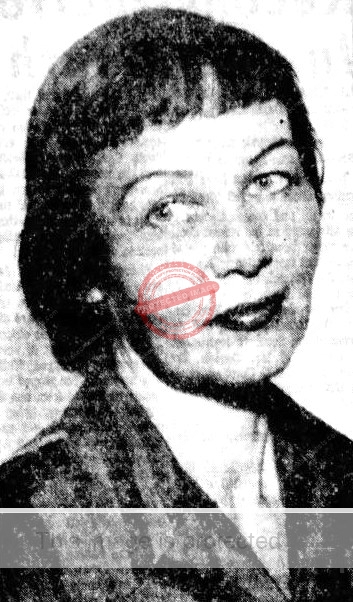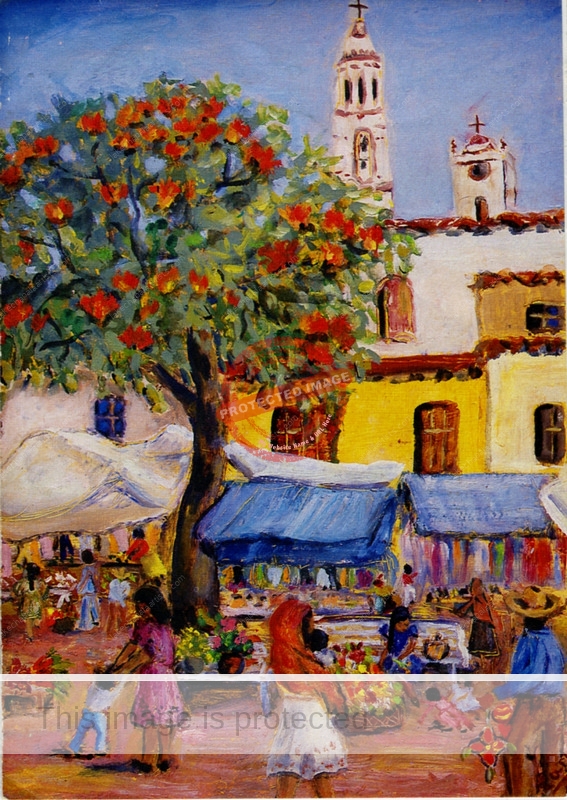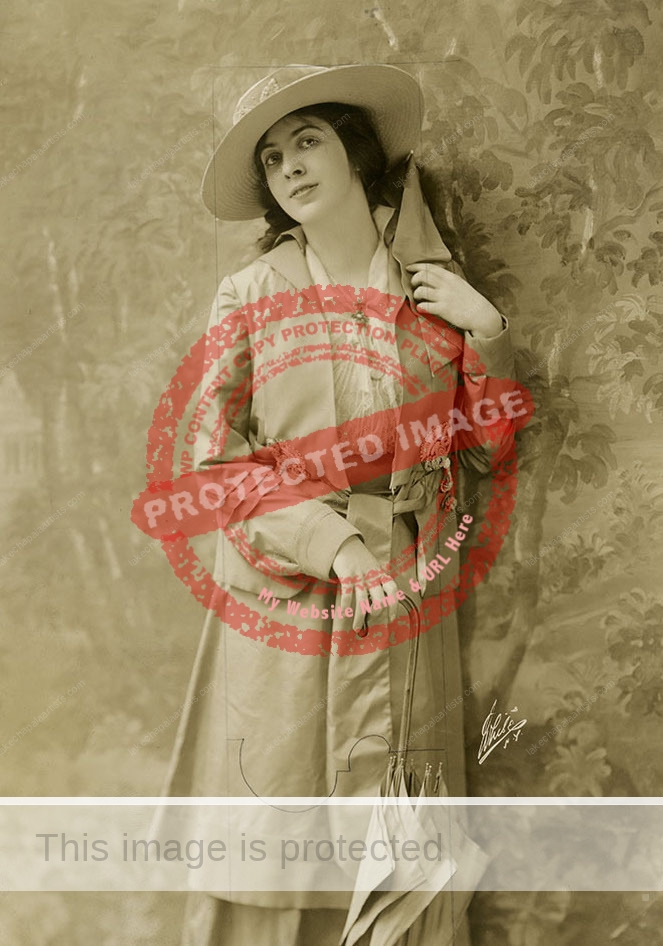Professional dancer Carla Manger (the name she was known by in Mexico) was born in Wattenscheid, Germany, on 7 August 1914. Her birth name was Carla Marie Windeler. After completing the equivalent of high school in Bochum, she danced in Oldenburg, Bielefeld and Stetin, before studying and dancing for three years at the Folk Arts School (Volsartschule) at Essen.
Carla, who also studied with noted German dance instructors Mary Wigman and Harold Kreutzberg, became an accomplished performer not only of classical ballet, but also modern dance and Russian, Polish, Hungarian and Spanish folk dances. During World War Two, she spent five years dancing professionally in Germany and Poland, including a lengthy spell at the Staats Theatre in Kraków, Poland. (Many years later, Howard Fryer, who lived near Carla Manger in her final years, claimed to have heard that “she was one of Hitler’s favourites and danced for him on numerous occasions.”)
Near the end of the war, Carla returned to Germany and later opened a studio and ballet school in Hameln-Weser (Hamlin). She and a dance partner ran the school and gave many performances in West Germany for nine years until she decided to leave Germany for the U.S. She arrived (unaccompanied) in the U.S. as “Carla Luecke” on 7 April 1955. Her first husband, Carl Frank Luecke (1902-1985), had moved to Los Angeles, California, decades earlier.

Carla Manger, 1958. (Credit: Wichita Falls Times, 29 June 1958)
After working briefly as a housekeeper in Port Jervis, New York, Carla moved to Wichita Falls, Texas, in 1956, where she became a dance instructor at Gross School of Fine Arts in Wichita Falls, Texas.
Two years later, in 1958, she bought the Betty Jeane Studio of Dancing in Tucson, Arizona, filed for divorce from Luecke, reverted to her maiden name of Carla Windeler, and renamed the studio the Carla Windeler Dance Studio. An advertisement for a dance performance in 1961 by her students described their director as “Carla Windeler, former Ballerina of European Opera.”
The Wichita Falls Times published a story by Carla in 1957 about the “bell clock” ( a kind of alarm clock), she had been given by her brother in 1939 at the start of her professional career. Carla had taken it everywhere, and described how it woke her at 2.00am one day in 1943, so she could hurry to the station to meet a Red Cross train carrying her younger brother, wounded in war, who was en route back from the front to a hospital.
In 1944, Carla was in Kraków, Poland, when the Russians arrived. She and many others fled. It took Carla four months to finally reach her family home in Bochum, which was bombed and destroyed shortly afterwards. Suddenly, under the rubble, the clock rang! Carla dug it out, but the glass was smashed; her father fashioned a replacement out of a broken window. After the war ended in May 1945, Carla took the clock with her to Hameln. Not long after she arrived in the U.S., the clock was “so tired” it stopped working. Luckily, an expert in Wichita Falls was able to restore the movement without damaging the polished window glass, which was Carla’s last link to her family home.
In about 1963, Carla married Henry Kinast Manger. Henry, born in Newark, New Jersey, in 1904, had divorced his previous wife, Helen, in 1962.
After moving to Jocotepec, Henry Manger is known to have helped archaeologists Clement Meighan and Len Foote during their excavations at Tizapán el Alto on the southern shore of Lake Chapala. He also donated land for a school in Nextipac, on the eastern outskirts of Jocotepec, and organized local parents to build a school and a house for the teachers. These plans continued even after Henry Manger’s unfortunate death in a Guadalajara hospital on 15 June 1968. According to local teacher Manuel Flores Jimènez, in appreciation of Manger’s generosity, the school had a bust of Manger on prominent display for many years.
With help from well-wishers, Carla was able to install, doors and bathrooms in the school by 1970, and bought school uniforms. That year she arranged a Christmas party for 175 boys and girls, despite having only just been discharged from a stay in hospital.
Carla also gave free dancing lessons to local children; some 80 youngsters were participating in 1970. Iin addition, she ran exercise ballet classes, and gave ballet classes at the Chula Vista Country Club.

Carla Manger. c 1988. Mercado en la plaza.
The Nextipac school (now the Escuela Primaria 15 de Mayo) continued to thrive and expand. In 1976, Henry Manger Jr. raised funds in the US for the cement, tiles and gravel needed to build a 6th Grade classroom, helping to ensure that Nextipac children could complete their primary school years without having to leave their barrio.
At least three of Carla Manger’s paintings of Jocotepec were chosen by Joan Frost for reproduction as Amigos de Salud greetings cards: a street scene and a view of La Quinta (Los Naranjitos), both dated 1982, and an open-air market on the plaza.
Carla was one of numerous Lakeside artists whose work was included in a group show titled “Pintores de la Ribera” at Club Campestre La Hacienda (mid-way between Guadalajara and Chapala) in May 1985. Other artists showing on this occasion were Daphne Aluta, Eugenia Bolduc, Jean Caragonne, Donald Demerest, Laura Goeglein, Hubert Harmon, B. R. Kline, Jo Kreig, Carla W. Manger, Emily Meeker, Sydney Moehlman, Xavier Pérez; Tiu Pessa, De Nyse Turner Pinkerton and Eleanor Smart.
Sources
- Arizona Republic: 6 May 1961, 12.
- Tucson Daily Citizen: 21 April 1961.
- Wichita Falls Times: 26 Aug 1956; 23 Sep 1956; 14 Apr 1957, 52; 20 Mar 1958.
- The News (Paterson, New Jersey): 16 Oct 1962, 32.
- Howard Fryer. 2010. El Nitty-Gritty.
- El Informador: 4 May 1985.
- Guadalajara Reporter: 30 July 1966; 28 Feb 1970; 25 Mar 1972; 26 Jun 1976, 21.
- Clement Woodward Meighan and Leonard J. Foote. 1968. Excavations at Tizapan El Alto: Jalisco. University of California.
Comments, corrections and additional material are welcome, whether via comments or email.

